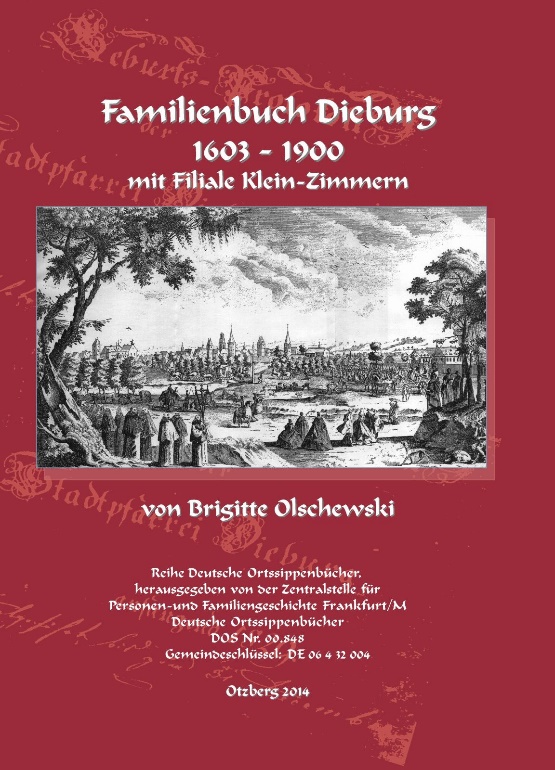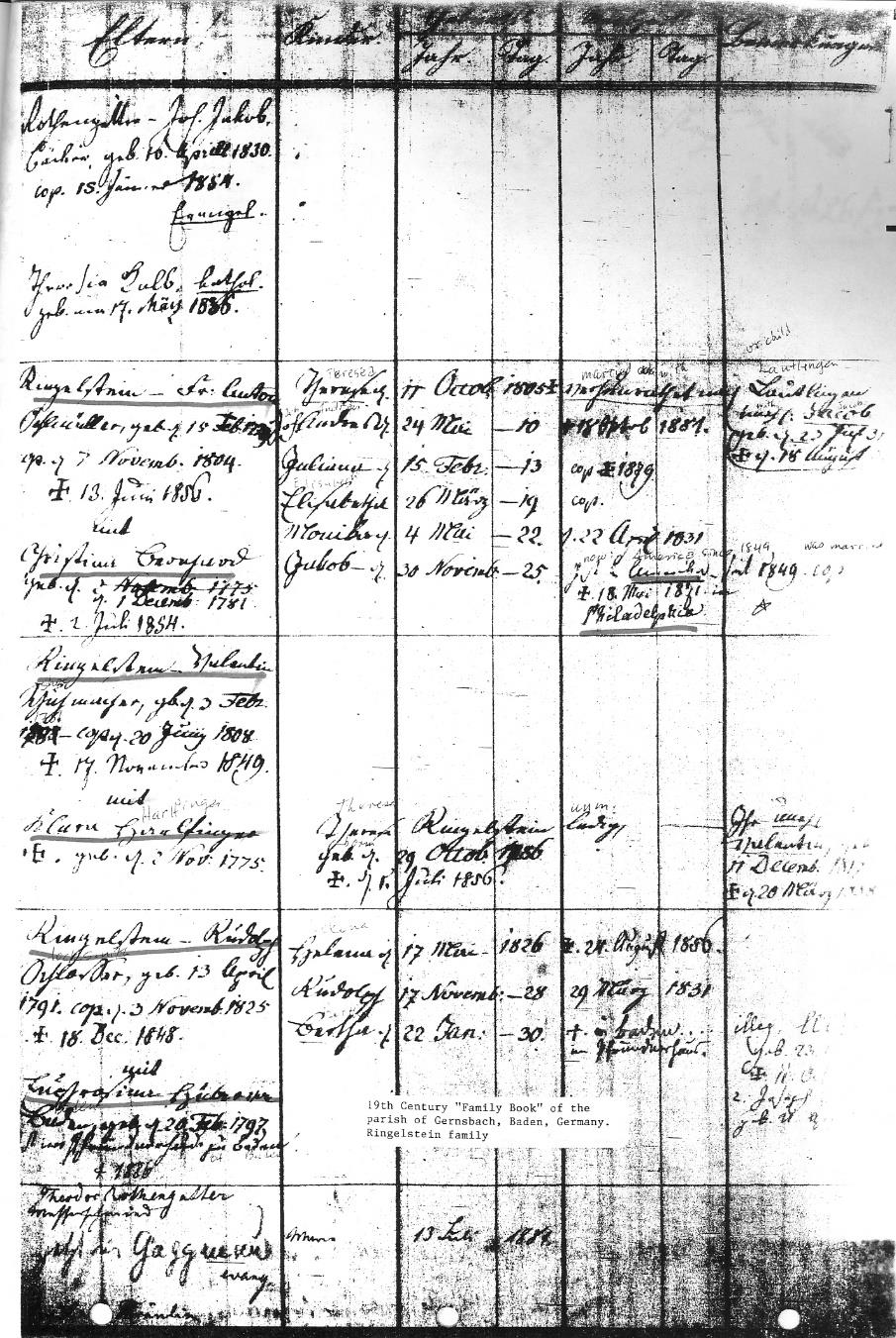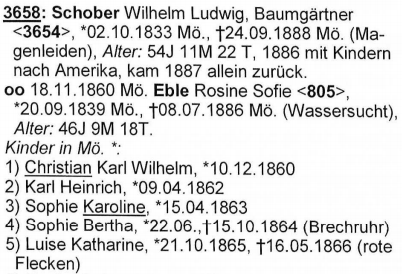German Ortsfamilienbücher (town family books)
 8
8Mar
In December 2018, the Price Genealogy blog ran a two-post series on finding a German American immigrant ancestor’s town of origin.
Once someone in the United States determines their ancestor’s town of origin in Germany, research can proceed in a relatively straight-forward manner. In the United States, genealogy research requires many different record types to extend a family line earlier than 1850 (the year of the earliest United States federal census that lists entire families). In Germany, it is usually possible to extend ancestral lines back into the 1600’s with only church records. There are two common presentations of German church records: church registers and Ortsfamilienbücher. It is usually most efficient to start with the latter.

Ortsfamilienbücher (OFB) (also known as Orstssippenbücher, Familienbücher) are town family books, a remarkably useful and unique source common in Germany. These are made when a local genealogy or history expert in the area extracts all the baptisms, marriages, and burials from the church registers for one town. These are put together into family groups according to the extracted church registers. The finished product often includes a few pages of town history at the front, and lists all the families from the church registers in alphabetical order by surname. Like the church registers from where data comes, these books are printed in German. The OFBs are much easier to read than the original church registers, which often present a deciphering challenge. Another major benefit is that the families are already compiled, so it is not necessary to spend hours paging through the registers to extract the baptisms, marriages, and burials of each family member before organizing them into families. It is important to recognize that some OFB are actually handwritten, and are part of a set of church registers, while others are published books. Sometimes a researcher will find there is no OFB, but through contacting local experts in the town of interest will learn that one of them has all this data in a genealogical database program on their computer. If one of these OFBs exists, the researcher can often take their ancestry back to the 1600s in just minutes. The remaining difficulties are with locating the OFB (or OFB data), and with understanding the OFB.

1825 Familienbuch of Gernsbach, Baden of Ringelstein family FHL 1,044,033
Understanding the OFB is the simplest of the two problems and can be sufficiently mastered with a little guidance. The key is to understand the dates, symbols, and numbering. Dates will follow the German format of DD.MM.YEAR not the United States format of MM/DD/YEAR. When in doubt, look at several dates. The digits that are sometimes over 12 will of course be the day position. OFBs tend to differ only slightly in their use of symbols, and they include a key at the start of the book to clarify their use. Instead of using words like birth, baptism, marriage, etc., the OFB will likely use these symbols:
- * a star (birth, as in the star that was the sign of Christ’s birth)
- ~ a tilde (baptism, representing the waves of water)
- oo an eternity symbol (marriage)
- + a cross (representing death, sometimes with a different cross style to represent burial).

In pdf article: "Using Ortssippenbücher to Research Your Family," by Daniel R. Lilenkamp
It is also useful to know the most basic German vocabulary of genealogically common terms. The German Genealogical Word List on the FamilySearch Wiki is helpful,[1] as well as Thode’s German – English Genealogical Dictionary for those who wish to become even more expert. Lastly, it is critical to understand the numbering. Every family should be numbered. The children in the family who appear as a parent of their own family will have a number next to their name that refers to that family. With a few minutes of looking at one of these books, its layout usually makes sense. As with anything, there may be small differences from one book to another, such as the possibility that some OFBs neglected the numbering system entirely, which would require the researcher to compare birthdates and names of a child in one list to the same person listed as a parent in another list.
If the researcher is fortunate, the OFB may be accessible from the United States. Check the FamilySearch Catalog and WorldCat.org for the name of the town. The Family History Library, Saint Louis Public Library, and Library of Congress have considerable collections. If the interested person cannot personally go to the library that holds the necessary OFB, a librarian or genealogist is often available to make the necessary copies. Bear in mind that when searching the FamilySearch Catalog a manuscript form of an OFB may be listed among the various church registers for a town instead of being listed separately as a book. The website for the Association for Computer Genealogy in Germany (Verein für Computergenealogie e.V.) at Genealogy.net has two important resources for locating OFB. The first to check is the list of extracted OFB data at OFB.genealogy.net. The next is their GenWiki at Wiki-de.genealogy.net. If you search the name of a town on the GenWiki, the researcher may find an OFB listed that was not found using the previous methods.
After all of this, the researcher may still not have located an OFB, but before assuming that there was none created, the researcher should contact local genealogists in or around the town of interest. The GenWiki often lists the name and email of a local genealogy expert. The researcher can use Google to locate the website of the town government, the website of the parish, or the website of a local society. Email addresses are often listed on these websites, and an attempt should be made to ask these local experts about the existence of an OFB or family database. These people are often happy to help someone genuinely interested in their ancestry from the region. That said, it is best that your letter avoid a long story, and instead focus on a specific question. Many people in Germany know some English. It is advisable to use tools like the German Letter Writing Guide on the FamilySearch Wiki,[2] and Google Translate to present your email in German followed by a copy of the same email in English. Whether these people can arrange to make limited copies of the pages needed from an OFB that only exists in Germany, or whether they can tell you how to purchase a copy, it is well worth the effort and cost to do this first. The researcher may even find OFBs for purchase from the websites of publishers such as at Cardamina.net.
Due to an OFB being compiled from a careful study of the church registers by a local expert, the error rate in OFBs is statistically lower than the error rate a genealogist will find in many other published family trees. But, as with anything else, human error is possible. Typos and questionable conclusions have been found in some OFBs. The researcher should always refer to the original church registers to verify any suspect items or to verify the entire research if resources permit. The registers may even contain marginal notes and other information not present in the OFB. Questionable data is more likely in an OFB for the earliest generations, when even the original records have so little detail that piecing together families is more difficult. OFBs also vary in the level of detail they give. Some do not even use the burial registers at all since families can be mostly compiled from baptism and marriage registers. Perhaps getting through the OFB project was more important at the time than being more thorough. Often when a less detailed OFB was published, a more detailed one will be published years later. This was the case with Düngenheim, that had a minimalistic OFB done in 1985 and an unusually thorough one in 2017. Another example is the OFB of Kehrig that sold out a minimalistic printing before having a more complete one published in late 2018 by Cárdamina Verlag. From this it is clear that a researcher may wish to check for an OFB again even if one that was not so helpful was found previously. With all of this in mind, whether an OFB was found or not, the next step will include looking through the original church registers.
Please look forward to the next article in this series to discuss the use of original records.
Our German research experts at Price Genealogy look forward to helping you discover your German ancestry. Please inquire today.
Michael
[1] https://www.familysearch.org/wiki/en/German_Genealogical_Word_List
[2] https://www.familysearch.org/wiki/en/German_Letter_Writing_Guide
